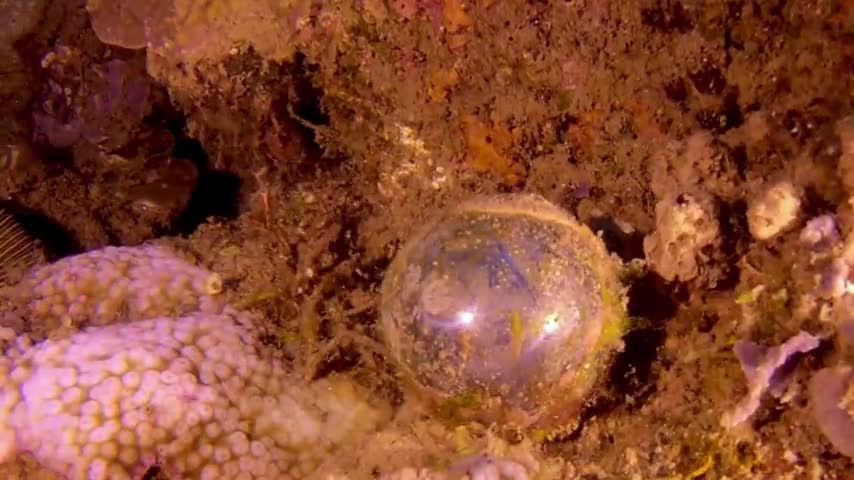Premium Only Content

Scuba diver thinks he's found trash but it's a bizarre living creature
Scuba diving is an exciting sport that takes the adventurous on a journey into a world that very few are fortunate enough to experience. The reefs below the waves are beautiful beyond description and the ocean life is fascinating. Each dive is different and there is more to learn than anyone could ever manage. This scuba diver has explored the waters in Belize, Mexico, Cayman Islands, Cuba, Galapagos Islands and Papua New Guinea. He has seen bizarre and wondrous creatures, but he has just found something unlike any other living organism that he has ever seen.
Initially drawn to a shiny sphere nestled in the coral and sponges in Kimbe Bay, Papua New Guinea, this diver believed he was about to pick up a piece of glass or other litter that had been dropped overboard. As he drifted closer, it looked like it could even be a metallic ball. It was completely spherical and uniform in shape, roughly the size of a large chicken egg. Although experienced scuba divers are well acquainted with the rule not to touch the reefs or sea life, the one exception is that removing litter from the ocean is advisable in most cases.
This diver drew closer and he was able to see the shine from his dive lights penetrating the outer surface, reflecting back at him from surfaces within the sphere. With a little imagination, he could now picture it as some alien object or well polished meteorite. As he reached for the strange object, he found the outside slightly springy. It was not metal or glass and he realized that felt like a peeled grape or even a huge eyeball. It was anchored to the coral and removing it would disturb the life around it.
Reluctant to touch it further, he left it where it was and brought his video footage back to the dive ship. A dive instructor and photography expert on board explained that this was actually a species of algae and that it grew so large that it is believed to be the largest single celled organism on the planet. Aptly named "bubble algae" or 'sailor's eyeball", they occupy most oceans throughout the world.
Scientists are keen to use these algae in research because they make it easy to study the migration of water soluble compounds across biological membranes. The ocean is full of fascinating and wonderous creatures. We are only beginning to understand our environment and the life forms that share our planet.
-
 LIVE
LIVE
Randi Hipper
11 minutes agoBitcoin CRASHES to 3 month low! Crypto investors BEWARE
65 watching -
 UPCOMING
UPCOMING
Conspiracy Pilled
11 hours agoAvowed
352 -
 5:31
5:31
Adam Does Movies
22 hours ago $2.08 earnedThe Monkey Movie Review - This Is From The Longlegs Director?
19.2K3 -
 14:47
14:47
Tactical Considerations
15 hours ago $3.02 earnedClassic Precision Woox Furiosa Bergara Premier 6.5 CREED
21.3K1 -
 40:44
40:44
Rethinking the Dollar
23 hours agoDonald & Elon Head to Fort Knox—What Are They Planning?
14.4K17 -
 1:10:15
1:10:15
MTNTOUGH Fitness Lab
1 day ago"My Baseball Career Wasn't Enough": Adam LaRoche's Life-Changing Anti-Trafficking M
12.6K3 -
 1:00:12
1:00:12
The Tom Renz Show
19 hours agoComing to America & Coming to Christ
41.1K7 -
 1:12:21
1:12:21
TheRyanMcMillanShow
1 day ago $0.43 earnedDebbie Lee: Mother of First Navy Seal Killed In Iraq, Marc Lee - RMS 019
17.2K1 -
 38:05
38:05
Uncommon Sense In Current Times
16 hours ago $0.99 earnedIs Israel Being Forced Into a Bad Deal? David Rubin Exposes the Truth | Uncommon Sense
22.7K11 -

FreshandFit
11 hours agoAfter Hours w/ Girls
130K95